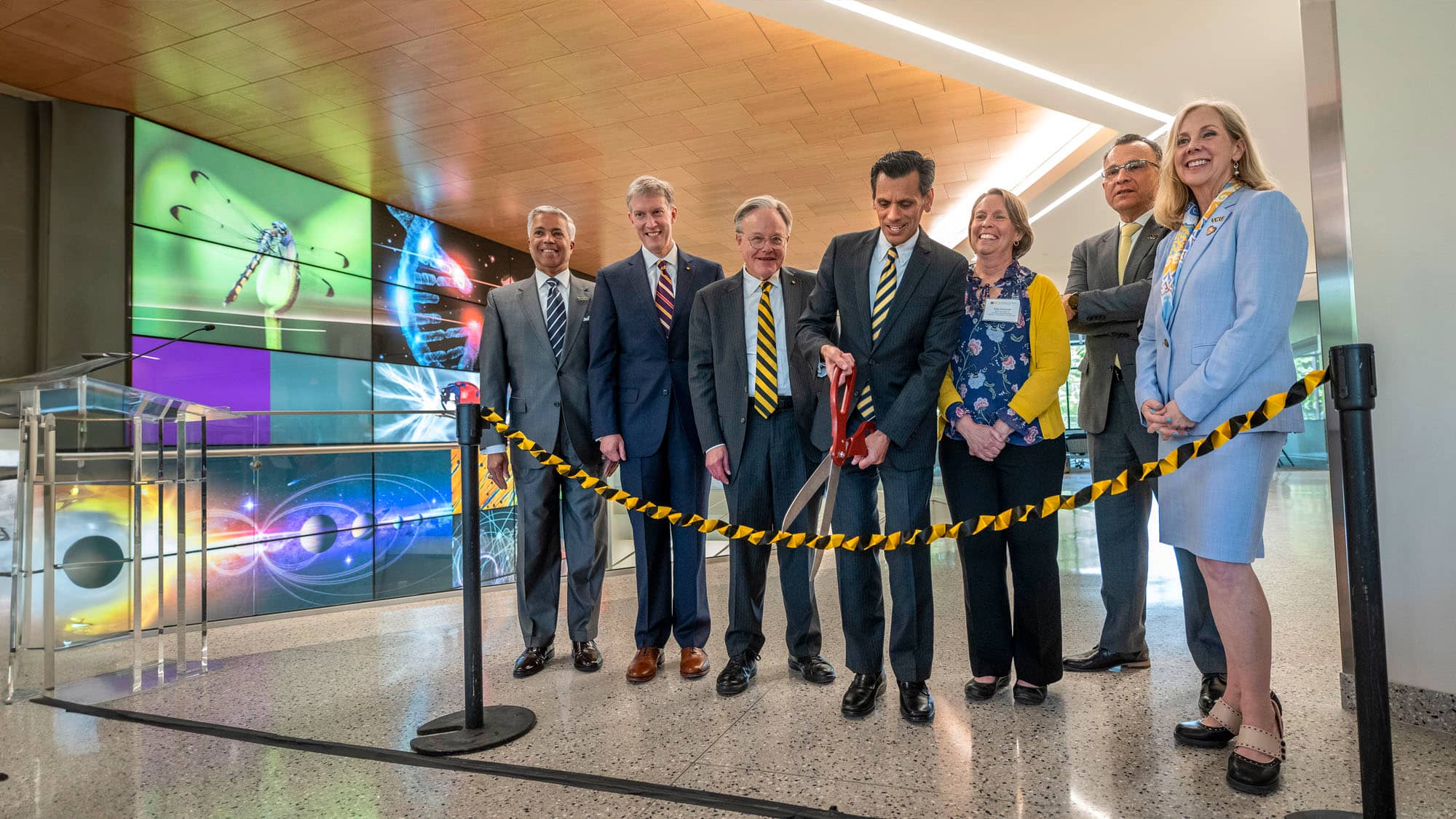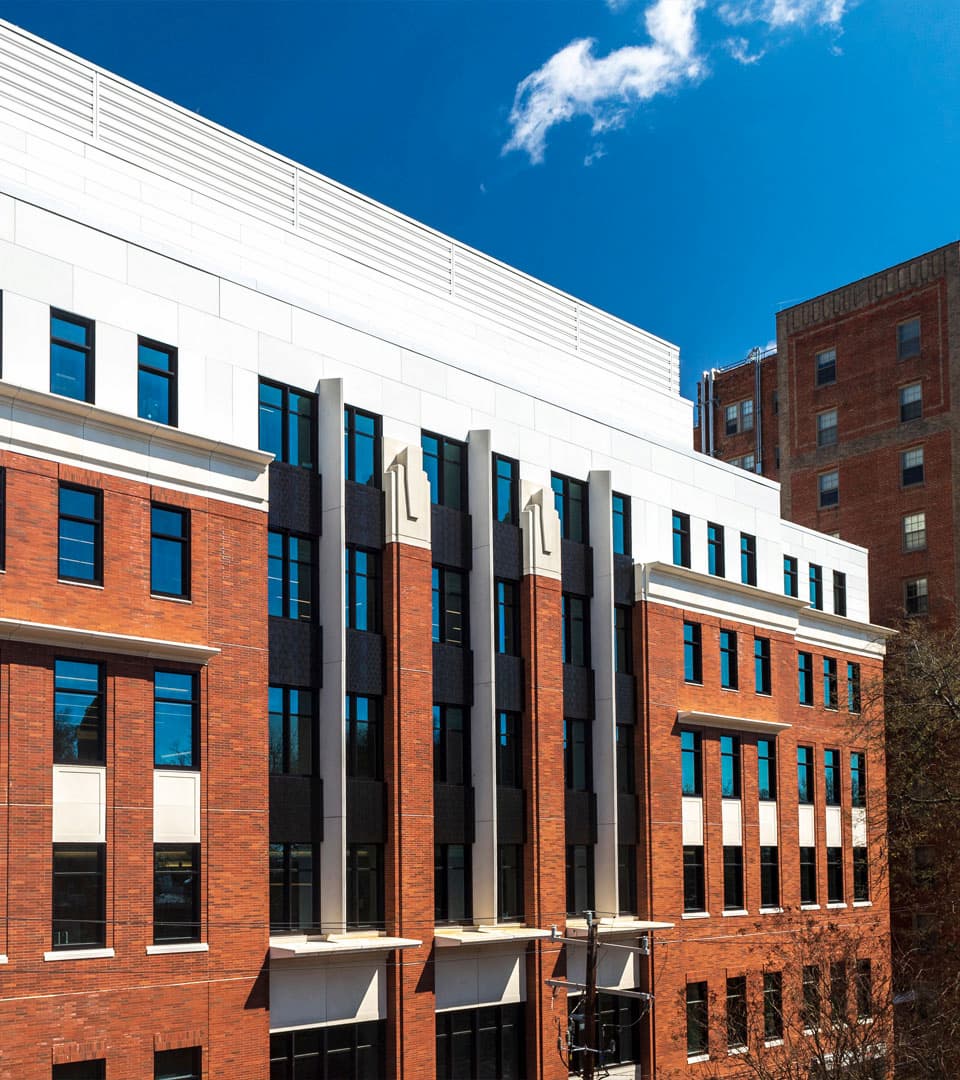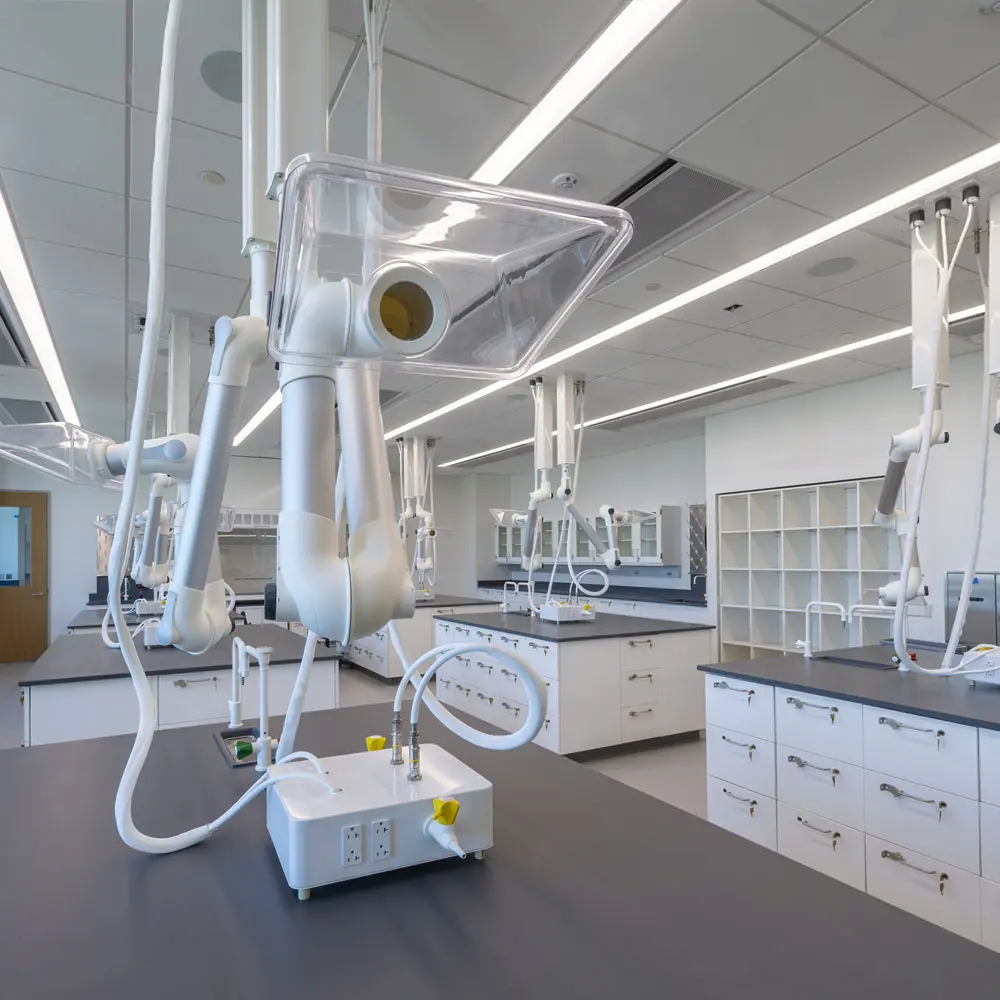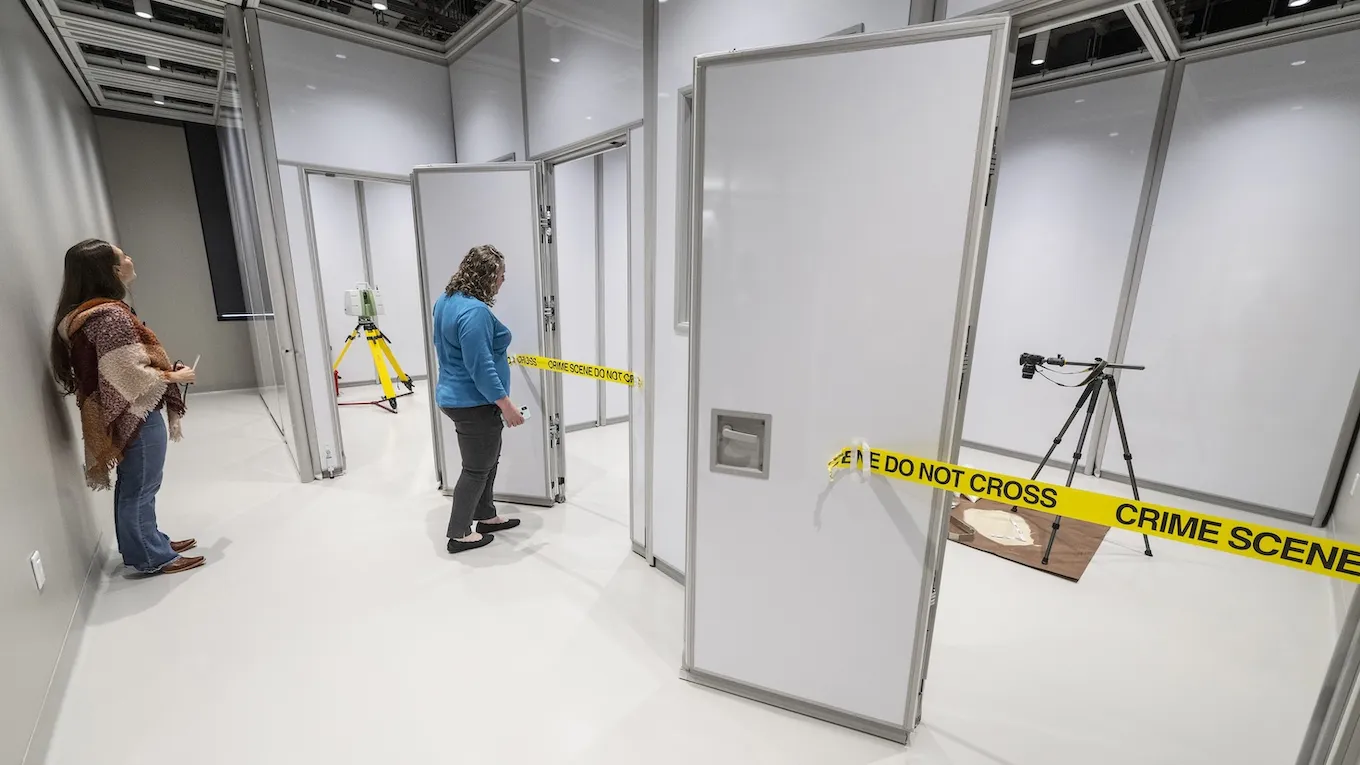A montage of illuminated science-related images, several stories high. An elliptical flex-space classroom filled with angular lights. And an enthusiastic group of faculty, guests, students and dignitaries. These were the sights that greeted hundreds of attendees as the doors opened to the new VCU STEM Building this past spring.
The April 26, 2023, ribbon-cutting marked the completion of an eight-year project — and the starting point of inspiration for thousands of students in dozens of majors.
In her speech at the standing-room-only grand opening, Sally Hunnicutt, Ph.D., associate dean for faculty and academic affairs (science and mathematics) in the College of Humanities and Sciences, said, “This building and this space are the physical embodiment of the mission of VCU and the College of Humanities and Sciences. We put our students first, right at the heart of their educational journey. To welcome our students, we intentionally designed and constructed a building that is beautiful, functional and interdisciplinary.”
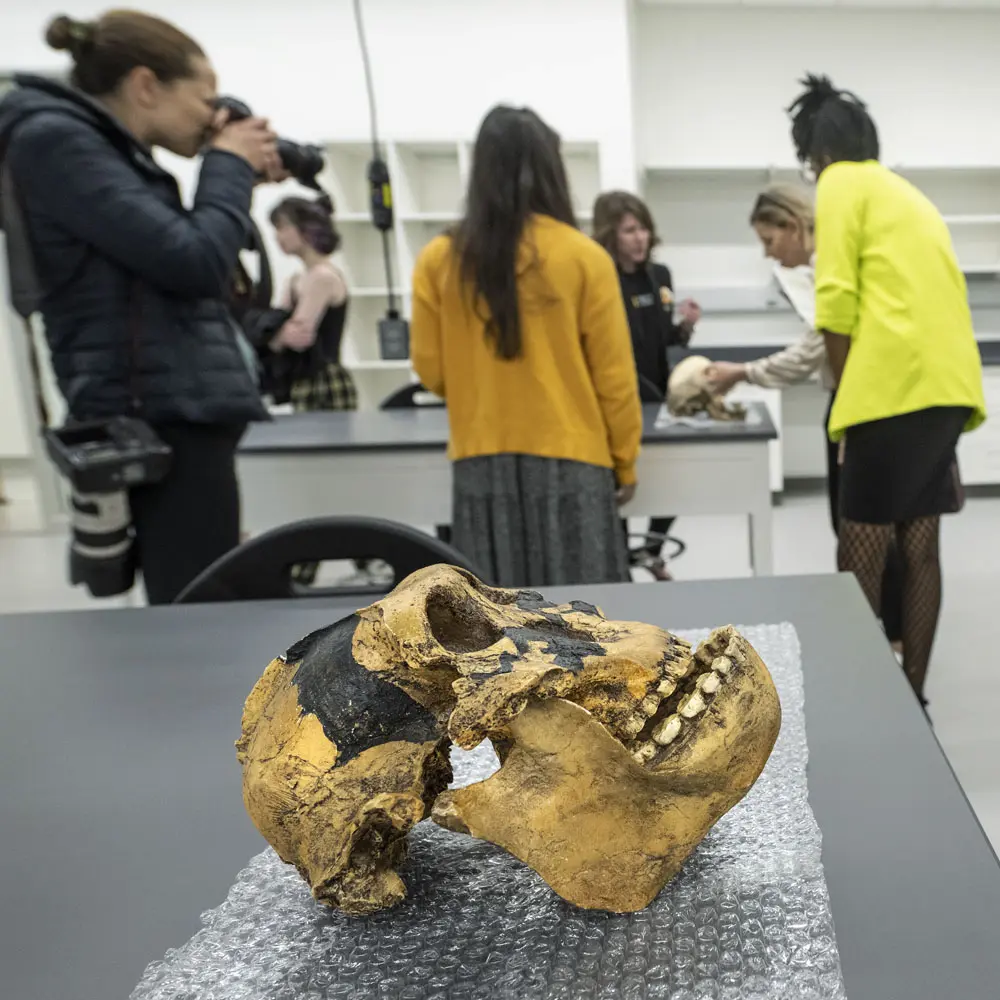
This building and this space are the physical embodiment of the mission of VCU and the College of Humanities and Sciences.
Sally Hunnicutt, Ph.D. associate dean for faculty and academic affairs (science and mathematics) in the College of Humanities and Sciences
Located at the site of the former Franklin Street Gym, the CHS’s 169,000-square-foot STEM Building is now welcoming about 8,000 students each semester. Most of the courses taught in the building are designed for first- and second-year students.
“These students are at a point where they are generating enthusiasm and interest for specific topics,” Hunnicutt said. ”They’re building a culture of teamwork and interdisciplinary study. The environment and technology here will help them fall in love with their program — to explore areas earlier in their journey, and to bring out their unlimited passion for learning.”
The six-floor building greatly expands lab, classroom and office space for the CHS. Nearly 60% of VCU undergraduate students are enrolled in the college, which includes 17 departments, two schools and three programs.
The new building includes space for the CHS’s three largest majors: psychology, biology, and kinesiology and health sciences. It also serves as the entry point for mathematics, chemistry and physics students, and for upper-level courses in biochemistry, modern physics, anthropology and forensic science. And even though it is called the STEM Building, courses in subjects including philosophy; gender, sexuality and women’s studies; sociology; mass communications and history are also being taught in the new facility.
